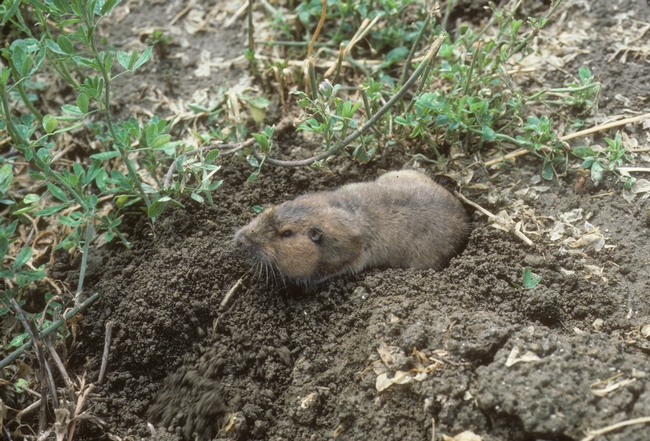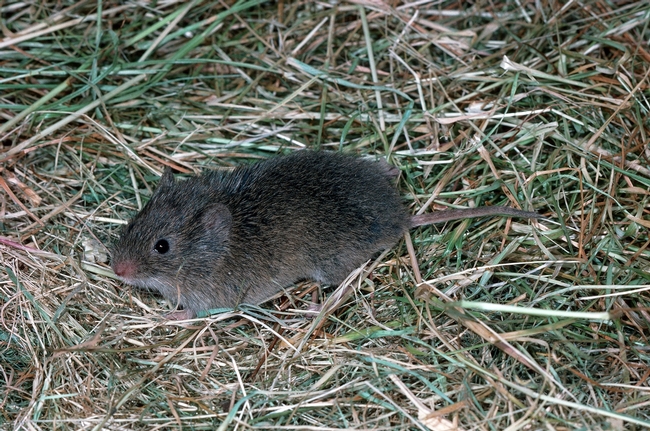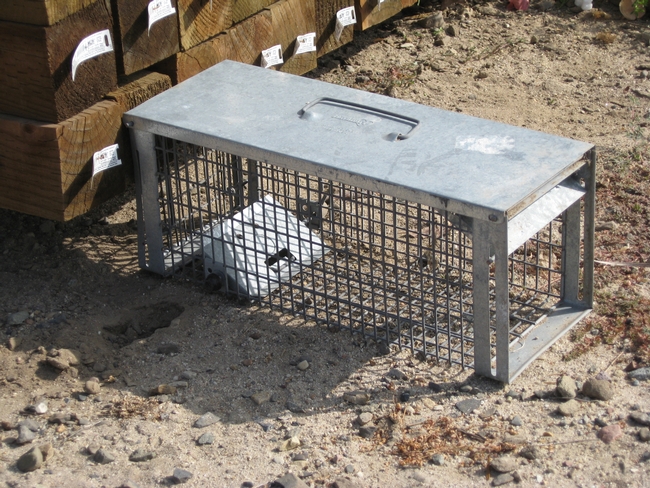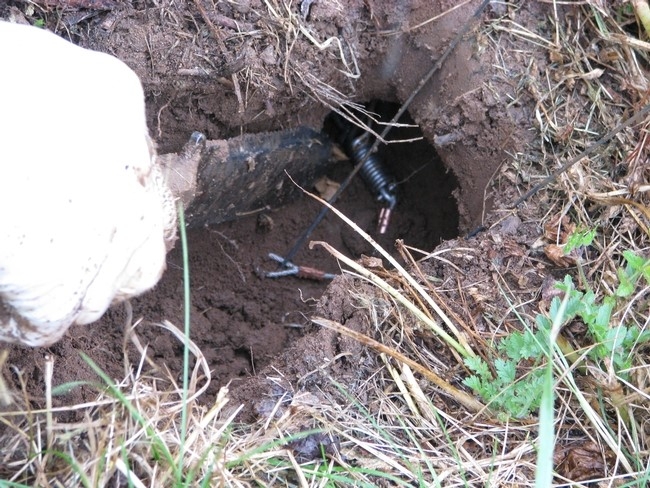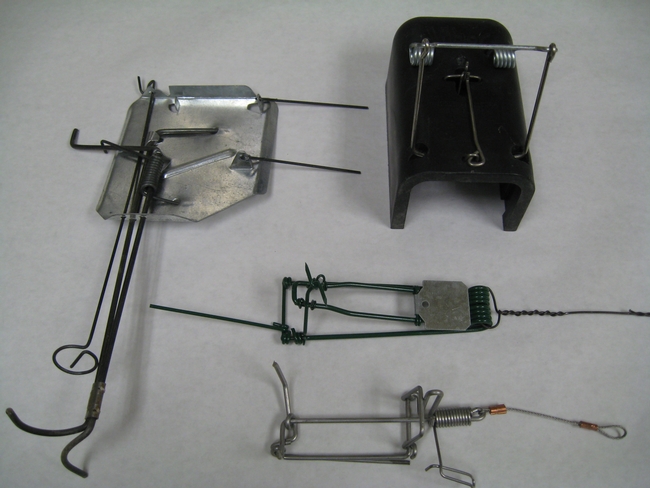
Posts Tagged: mice
Burrowing Varmints Guide
- Author: Pamela Kan-Rice
Burrowing rodents can cause extensive and expensive damage to orchards and crop fields. To manage the pests without chemicals used on conventional farms, organic growers can consult a new publication from UC Agriculture and Natural Resources scientists.
“Burrowing Rodents: Developing a Management Plan for Organic Agriculture in California” outlines management within organically acceptable methods using an integrated pest management approach.
California ground squirrels, pocket gophers and meadow voles are the three most common species that cause damage. Squirrels chew on seedlings, fruit and nuts, killing young trees and reducing crop yields. In addition to plants, ground squirrels, pocket gophers and voles can chew on irrigation lines, and their burrow systems can channel water away from plants and erode the soil. The holes and mounds created by burrowing rodents pose hazards to farmworkers and farm machinery.
Meadow mouse or vole that can girdle a tree if you aren't watching
This publication helps growers identify the rodent species on their properties, their life cycles and tools available to control them.
“Growers can read about how to effectively select and set a range of traps for burrowing rodents,” said co-author Margaret Lloyd, UC Cooperative Extension small farms advisor for the Capitol Corridor. “Traps are an important tool for organic management, but maximizing control comes from integrating knowledge. Here we present information about rodent biology, trap efficacy, biocontrol, habitat management, plant protection and other approaches to collectively manage the pest problem.”
In the publication, Lloyd and Roger Baldwin, UC Cooperative Extension wildlife specialist in the UC Davis Department of Wildlife, Fish and Conservation Biology, review the effectiveness of commercially available traps – where to place the traps, whether to use attractants, and methods of euthanizing the animals.
They also offer cultural techniques for deterring rodents such as flooding fields and deep ripping soil to destroy burrow systems. Crops for orchard floors or cover cropping can be selected and managed to minimize habitat that protects and encourages gophers and voles.
For biological control, they suggest barn owls, raptors and snakes might be able to assist, but warn growers that predators alone will not be able to eat enough of the rodents to reduce the high populations to tolerable levels for many growers.
“Effective management will rely on a suite of tools,” said Baldwin.
The 15-page publication is available for free download at https://anrcatalog.ucanr.edu/Details.aspx?itemNo=8688.
Got Voles?
Baldwin and Meinerz are UC Davis and Witmer and Werner are USDA/APHIA/Wildlife Services-National Wildlife Research Center
Voles are short, stocky rodents that often cause extensive girdling damage to a variety of tree and vine crops throughout California. Vole management is often quite challenging given how numerous they can be in a given area. In more recent years, effective management has often relied on some combination of vegetation removal, exclusion using trunk protectors, and rodenticide application. Vegetation removal is a great tool for reducing numbers in a field, but doesn't always eliminate all problems in an area. Plus, vole population size tends to ebb and flow from low to high densities; when densities are high, vegetation removal is often insufficient to reduce girdling damage.
Exclusion through the use of trunk protectors can be a good way to reduce girdling damage as well. However, trunk protectors should be buried at least 6 inches below ground to keep voles from tunneling underneath the protectors. This substantially increases the amount of labor required to protect trees and vines. Ultimately, this approach is only cost effective if high levels of damage are anticipated.
Rodenticide applications are also frequently used to knock down vole populations. However, rodenticide applications are generally not allowable within an orchard or vineyard during the growing season, thereby eliminating the use of one of the most effective vole management tools when it is most needed. Clearly there is room for a new tool to be added to the proverbial IPM toolbox when it comes to managing voles in orchard and vine crops.
Chemical repellents are one such tool that could be considered. Historically, repellents have not proven overly effective for field application against voles. However, recent laboratory testing of anthraquinone indicated that even low concentrations of this chemical were effective at reducing grain consumption by voles. Furthermore, anthraquinone has proven effective as a bird repellent. Anthraquinone is a post-ingestive product that causes animals that consume the product to become ill, thereby making it less likely that the animal will consume the product again during a subsequent feeding event. This kind of repellent is ideally suited for trunk application given that the repellent can easily be applied to the portion likely to be consumed by the vole. If effective, minimal girdling damage should be observed. A repellent application also has the added advantage in that it can easily be paired with vegetation management to hopefully further reduce girdling damage when compared to using either one of these approaches alone. Therefore, we set up a study to test the potential impact that a combination of vegetation management and anthraquinone applications would have on girdling damage by voles to young citrus trees. We also tested the longevity of anthraquinone to determine if long-term repellency following field application was likely. We tested this impact during both spring (characterized by a cool-wet weather pattern) and summer (characterized by a hot-dry weather pattern) seasons to determine if weather impacted potential girdling damage.
We found that anthraquinone was in fact highly repellent following trunk application, with a >90% reduction in girdling damage observed following application regardless of the season when it was applied. Anthraquinone exhibited substantial longevity, with no increase in girdling damage observed for the entire summer (5 weeks) and spring (6 weeks) sampling periods. This clearly indicates substantial repellency for anthraquinone applications, with repellency to last for at least two months, and likely for much longer given that we observed no upward trend at all in girdling damage at the end of our study period.
When combined with anthraquinone treatments, the removal of vegetation completely eliminated all girdling damage during summer. However, we did not observe this same collective impact during spring. That said, the inclusion of vegetation management with anthraquinone applications is likely warranted given our understanding of the need for multiple management strategies to maintain the long-term effectiveness of rodent management programs.
These results clearly indicate effective repellency of voles following anthraquinone applications, but at this time, anthraquinone is not registered for use against any mammalian species. We are hoping to gauge the interest of growers for the registration of this repellent against voles in orchard and vine crops. This is where we need your help. We have developed a very short survey (will take less than 3 minutes to complete) to gauge this interest. Please take this very quick survey to assist in this effort:
https://ucanr.edu/survey/survey.cfm?surveynumber=24480
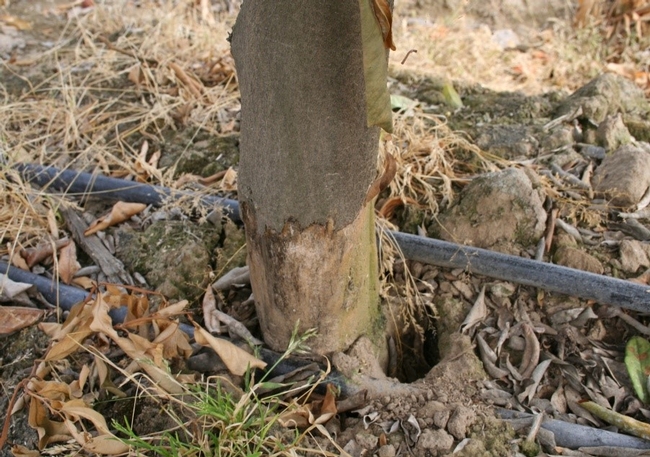
vole 7
Vole Damage in Citrus Revisited
Since the first publication of this article on vole damage in citrus, a recent field observation regarding vole activity is worth noting. Voles prefer a situation where there is cover and shelter generally from weed or grass. In some orchards established in the last few years a plastic strip has been installed along the tree row for weed management (Fig 1). These strips appear to be offering a sheltered environment for vole activity in some cases (Fig 2). Recent observations in two such installations, one a block planted in 2013 and the other an eight year old planting exhibited significant vole activity. The young orchard at this point does not exhibit obvious tree damage although active tunneling is apparent (Fig 3). In the older orchard feeding damage to the trunks is very obvious (Fig 4).
Meadow Mice (Voles) can cause serious damage in a citrus orchard resulting in partial or complete girdling of a tree (Fig 5). Trees often exhibit damage to the bark of the tree from the soil line up 6-8 inches (Fig. 6 ). On close inspection, an open hole 1-1.5 inches in diameter may be found at the base of the tree (Fig 7).
Five species belonging to the genus Microtus are found in California, two of which “Microtus californicus” and “M.montanus” are reported to cause damage. Damage has been reported in permanent pasture, alfalfa, hay, artichokes, Brussels sprouts, carrots, cauliflower, potatoes, sugar beets, tomatoes, grains, nursery stock and the bark of apple, avocado, citrus, cherry and olive trees.
Microtus are often found where there is grass cover. They generally do not invade cultivated crops until the crop is tall enough to provide food and shelter. Meadow mice are active all year round. They forage at any time during the day or night but are chiefly nocturnal. They are usually found in colonies marked by numerous 2-- inch wide surface runways though matted grass. Small brownish fecal pellets and short pieces of grass stems along the runways are evidence of activity. The burrows consist of extensive underground tunnels, nest chambers and storage chambers. Home range is typically small, less than a 60 foot radius in the case of “M.californicus”. All meadow mice swim well. Therefore, irrigation ditches will not serve as effective barriers against meadow mice movement into fields. Meadow mice may forage beyond the sheltered runways. Food consists of tubers, roots, seeds, grain, and succulent stems and leaves.
Females breed at 4 to 6 weeks of age with litter size of “M.californicus” averaging around 4. Under natural conditions a female Microtus may produce from 5 to 10 litters a year. The major breeding season corresponds with the season of forage growth. Microtus populations build up to a peak every 3 to 4 years, followed by a rapid decline during the next breeding season. The exact causes of the cycle of buildup and decline are not known, though disease, food shortages, physiological stress from overcrowding, and other factors may be involved. It is assumed that in cultivated areas Microtus populations are permanently based in favorable habitat such as roadsides, canal banks or adjacent noncultivated land. Invasion of cultivated cropland occurs when the population builds up or when the wild habitat becomes unfavorable. Coyotes, badgers, weasels, snakes, hawks, owls, herons and gulls are among the principal predators. It is believed that predators are not able to prevent or control a population eruption because of the birth rate of the fast breeding Microtus population. Meadow mice are classified as nongame mammals by the California Fish and Game Code. Nongame mammals, which are found to be injuring growing crops may be taken at any time or in any manner by the owner/management. The most effective management options in an orchard situation are a reduction in ground cover and the use of toxic baits. Meadow mice are cover dependent. In situations where cover removal is not possible or is insufficient to solve the problem, the next best option is the use of toxic baits. Many bait carriers are used (e.g., oat groats, wheat bait). Baits: Crimped oat groats are the most satisfactory bait although crimped whole oats are used (e.g., oat groats, wheat grains, pelletized formulations, etc., but crimped oat groats have typically been most effective). The primary toxicants used for meadow mouse control include zinc phosphide, diphacinone, and chlorophacinone. Directions for management including baiting can be obtained by contacting the Agricultural Commissioner's Office. * Portions taken from J.P.Clark Vertebrate Pest Control
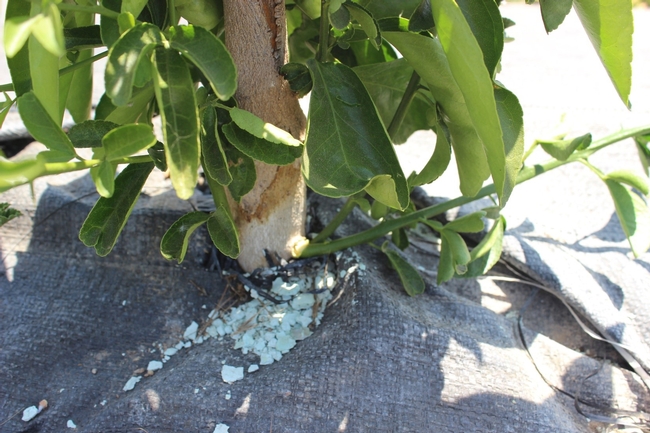
vole 1

vole 2

vole 3

vole 4
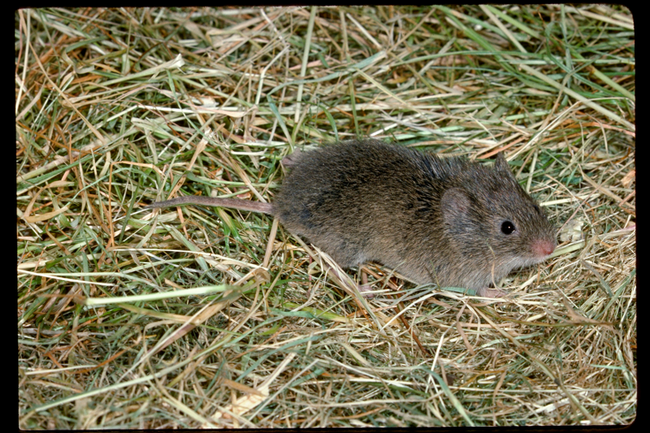
vole 5
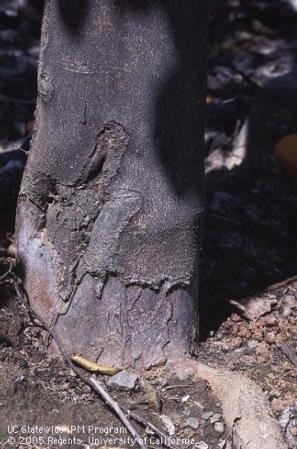
vole 6

vole 7

